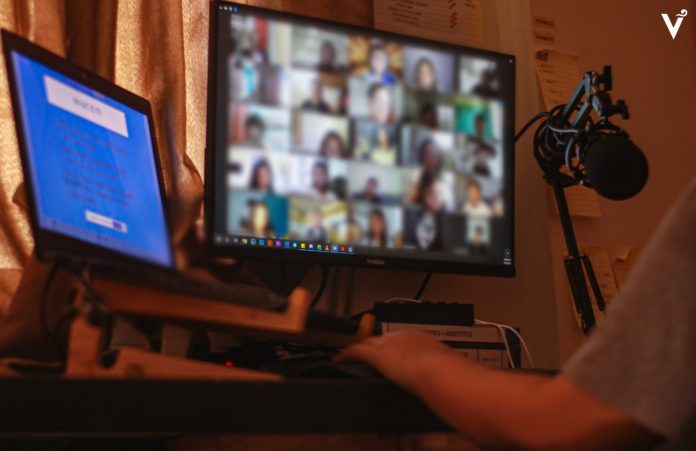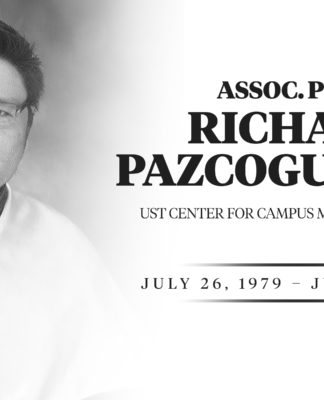
WITH THE “enriched virtual mode” renewed for the second term of academic year (AY) 2020-2021, faculty were instructed to use new teaching and assessment methods to fine-tune the delivery of online learning to Thomasians.
Vice Rector for Academic Affairs Prof. Cheryl Peralta said faculty members underwent a University-wide capacity-building session before the opening of the second term.
The training, dubbed “Teaching and Innovation Goals for E-learning and Redesign” (Tiger), equipped educators with new teaching-learning and assessment methods in the online setting.
This was a response to the challenges faced by educators during the first term of enriched virtual mode, Peralta told the Varsitarian.
“While we understand that changes may not happen overnight, we hope that these learning opportunities for the faculty will motivate them to enhance instruction and continue acquiring feedback from their students on whether these promote a positive learning experience,” Peralta said.
In the Tiger training, faculty members were asked to review the teaching principles and strategies they had utilized in the first term so they could modify them, Peralta said.
“This will help us redesign learning for the second term so we transcend the mere survival of teaching and learning in this pandemic and move towards innovation and quality assurance,” she said.
College of Science Dean Prof. Rey Papa earlier told the Varsitarian that they were also exhausting ways to improve the delivery of their lecture and laboratory classes.
The College of Science held a department-level online webinar and workshops for faculty members headed by the Science Pedagogy Committee.
“Given that the enriched virtual mode of learning is only one term old, we are of course planning to implement improvements that can help us improve the delivery of quality lecture and laboratory science courses,” Papa said.
The webinars and workshops guided faculty members in redesigning their course plans, teaching techniques and laboratory demonstrations in an online setting.
Papa added that they were anticipating the gradual easing of travel restrictions and access to the University so that faculty members could utilize UST’s laboratories and equipment for recording asynchronous and conducting synchronous sessions.
He also disclosed that the college was looking at the possibility of providing students in select courses with “laboratory kits” to help them conduct laboratory experiments at home.
Papa said the college had been relying heavily on virtual laboratory simulations to improve the delivery of learning in laboratory courses.
On Feb. 3, Manila City Hall allowed medicine and allied health programs in the University to conduct limited face-to-face classes for the second term.
In the College of Architecture, Asst. Prof. Rino Fernandez told the Varsitarian that although there were minimal problems in delivering studio classes online, the college made several adjustments in assessment methods.
“Sa architecture kasi, kailangan naming ipakita sa students, through graphical drawings, yung dini-discuss namin para maintindihan nila. And we also need to show them, through graphical means, ‘yung problem ng plans and other drawing na pinapakita nila,” Fernandez said
“Sa traditional teaching mode kasi, may pen or marker lang ang professors, okay na ‘yun para sa assessment ng submitted plates. For virtual mode, we are now using [a] tablet to [check] submitted plates [and] for online demonstrations as well,” he added.
‘Low-bandwidth’ materials
Both Peralta and Papa acknowledged the “unique context” and challenges presented by enriched virtual mode in the first term, highlighting internet connectivity as the most reported issue.
Peralta said faculty members were encouraged to prepare learning materials that required low bandwidths and “variable immediacy” of response.
“With this, the faculty training program for the second term directed faculty members to reflect upon the teaching-learning strategies and assessments they utilized in the first term within the content of Daniel Stanford’s Bandwidth-Immediacy Matrix,” Peralta said.
Bandwidth is the capacity for data transfer of an electronic communications system, according to the Merriam-Webster dictionary.
Daniel Stanford’s Bandwidth-Immediacy Matrix is a graph that evaluates the pros and cons of activities requiring high versus low bandwidths and the immediacy level of each to help mitigate bandwidth issues that educators and students might encounter.
“Recognizing that this is a barrier that is not completely within our control, we endeavor to assist the faculty in preparing instruction that is flexible and accessible to students amidst limitations in internet connectivity,” the vice rector said. Jacqueline Martinez and Joanne Christine Ramos
EDITOR’S NOTE: THE PREVIEW IMAGE FOR THIS STORY WAS UPDATED ON FEB. 24, 2021 AT 11:13 A.M.















